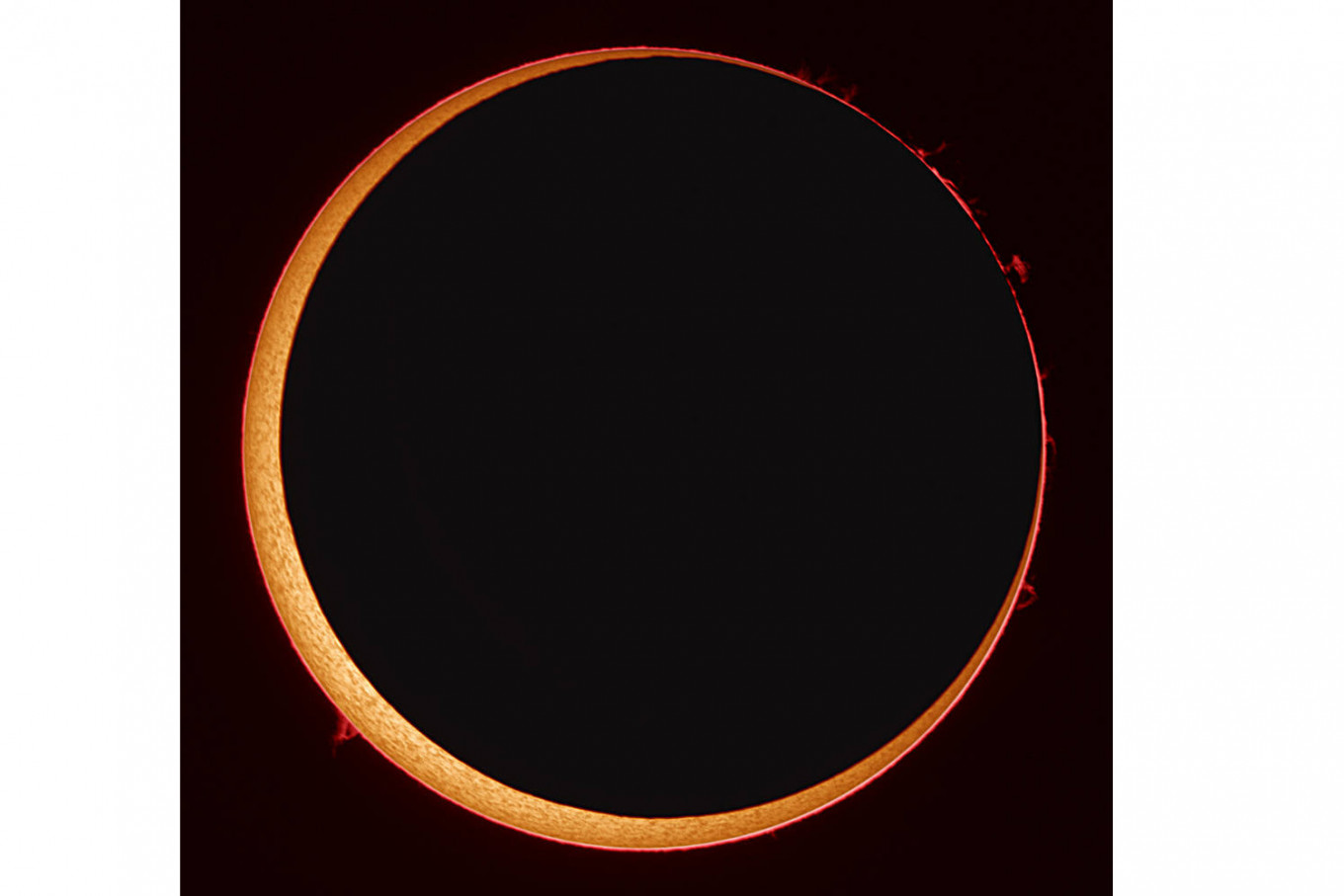Popular Reads
Top Results
Can't find what you're looking for?
View all search resultsPopular Reads
Top Results
Can't find what you're looking for?
View all search resultsIndonesia to witness rare ‘solstice annular solar eclipse’ on Sunday
Sunday's annular solar eclipse is a rare phenomenon because it happens at the same time as the summer solstice.
Change text size
Gift Premium Articles
to Anyone
M
ost parts of the Indonesian archipelago will witness the rare spectacle of an annular solar eclipse, which will occur simultaneously with this year’s summer solstice on Sunday.
The National Institute of Aeronautics and Space (LAPAN) said the eclipse would be a rare phenomenon, as the last similar eclipse that could be witnessed from the archipelago occurred in 1648. Moreover, people will have to wait another 19 years to be able to witness such a phenomenon again.
Halo #SobatLAPAN, kita akan menyongsong Cincin Api Solstis yang akan terjadi pada 21 Juni 2020. Fenomena ini dinamai demikian dikarenakan Gerhana Matahari Cincin (GMC) bertepatan dengan Solstis Juni 2020. #GerhanaMatahariCincin #Gerhana#Solstice#GerhanaMatahariSebagian pic.twitter.com/8pt4kb9Ulr
— LAPAN (@LAPAN_RI) June 19, 2020
Indonesia will be one of many countries and regions to witness the solar eclipse, including Congo, South Sudan, Yemen, Saudi Arabia, Pakistan, India, China, Taiwan and Guam Islands.
LAPAN said the best place to watch the eclipse would be Miangas Island in Talaud Islands, North Sulawesi. People in most parts of North Sulawesi, North Maluku, West Papua and Papua can also witness around 30 to 40 percent of the solar eclipse.
Read also: Jakartans witness solar eclipse at the city’s planetarium and observatory
The entire eclipse is expected to last for two hours in Miangas – the longest compared to other regions in the country – starting at 3:22 p.m. local time and ending at 5:32 pm. The eclipse’s peak will occur at 4:32 p.m.
People in Jakarta, West Java as well as most parts of Central Java, East Java, Bengkulu and Lampung will not be able to observe the eclipse. Several platforms will livestream the eclipse, such as the Virtual Telescope Project.
Annular solar eclipses occur when the Sun, Moon and Earth line up perfectly while the Moon is at its farthest point from the Earth. From the planet’s surface, the Moon’s apparent diameter is smaller than the Sun’s. It therefore blocks most of the Sun’s light, leaving a glowing ring around the moon’s circumference.
The summer solstice occurs when the Earth is tilted about 23.4 degrees toward the Sun, meaning the planet’s north pole is tilted directly toward the star, as reported by livescience.com. This phenomenon means the northern hemisphere will bask in more daylight than any other day of the year. (kuk)











